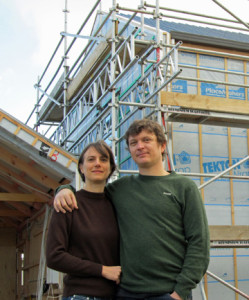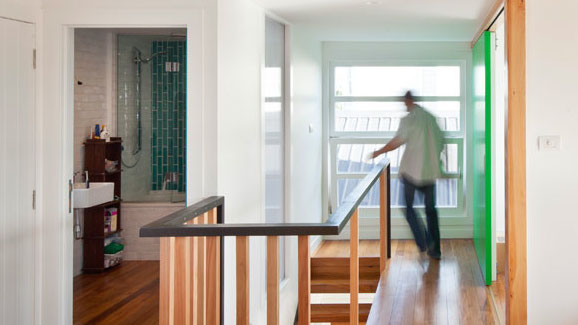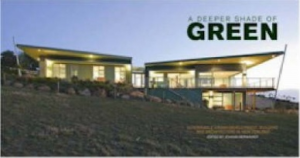Podcast: Play in new window | Download | Embed

I’ve been following Jo Wood’s and Shay Brazier’s Zero Energy House project for nearly three years and I’m very excited to have them both on the show to share some of the details of their design and inspiration.
Characteristics of a Good Home
I wanted to cut the chase and find out what makes this house so good. What are the key features and products that others can use to make a zero energy house? But Shay correctly pointed out that there’s more to it than that.
Before looking at ‘what‘ makes a good house, it’s useful to consider the ‘why‘.
Three key characteristics Jo and Shay were after (and couldn’t see in many existing homes) are:
- Health and comfort
- Affordable to build AND to operate
- Inspiring and rewarding
I think these principles are even more important foundations for a home than steel and concrete. These characteristics are really at the heart of what good home is for.
Features
Having established the purpose, there are of course a number of features that help achieve the above characteristics:
- Passive design
- Energy generation via an innovative, integrated solar roof
- High quality, high performance glazing and timber joinery
- Recycled and locally grown timber
- Splashes of colour!

The Role of the Architect
Jo and Shay are both engineers. It would have been tempting to take on a lot of the complexities of the design themselves, however they both value the contribution that a good architect can make. Architecture in it’s true sense is about finding solutions through design. The success of the project is testament to having a good designer on the team.
A Good Design Brief
One of the first steps on the journey to creating the Zero Energy House was creating a very detailed design brief for the architect. This went beyond the basics like number of bedrooms and size. Being skilled engineers, Jo and Shay were also able to very clearly define what ‘warm and comfortable’ actually means (for example, the house would have to maintain 18 degrees inside by itself).
They also did a lot of scrap-booking to communicate their vision and values.
It turns out that this sort of detail in the design brief was incredibly valuable for the architect. It’s also very rare. (Something I discussed with Mark R LePage in episode 50.)
It Makes Sense and It’s Not That Hard
The key message that Jo and Shay would like others to get from this project is that everything they’ve done to create the Zero Energy House, makes sense. It may take a little bit of extra work, but hopefully they’ve now reduced this workload by demonstrating at least one option for the method and materials .
They estimate that the premium above a standard build is about 10%. But they’re generating about 30% more energy than they’re currently consuming and their winter power bills are about $1.80 per month! That definitely makes sense!
Book Recommendations
I’m very happy to share Jo’s recommendation of The New Autonomous House: Design and Planning for Sustainability
, this 2002 update to Brenda and Robert Vales original 1975 The Autonomous House. This is described as “a blueprint of green architecture for future generations”. Originally from the UK, Brenda and Robert now live here in New Zealand. I’ve heard them speak, and they’re extremely passionate, unique and eloquent.
 Jo and Shay also recommend, Deeper Shade of Green by Johann Bernhardt
Jo and Shay also recommend, Deeper Shade of Green by Johann Bernhardt

Leave a Reply